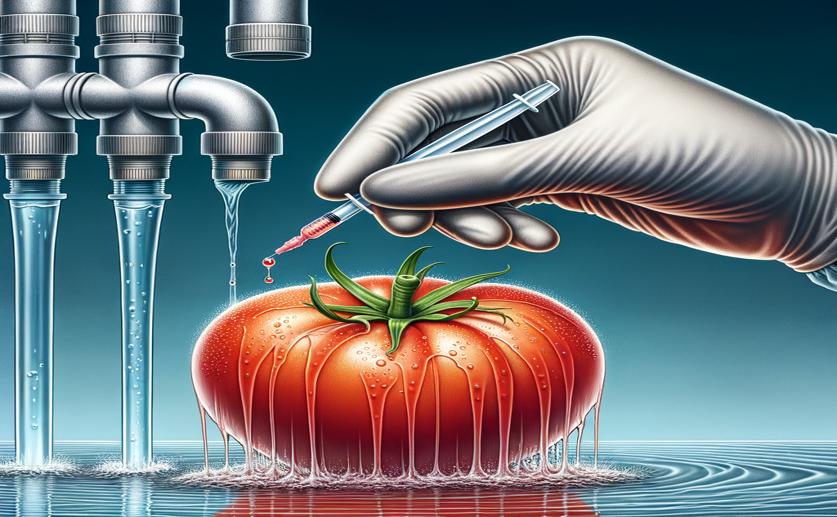
Preventing Salmonella on Tomatoes Using Peroxyacetic Acid in Water Systems
Jim Crocker
30th May, 2024

Image Source: Natural Science News, 2024
Key Findings
- The University of Florida study found that peroxyacetic acid (PAA) can prevent Salmonella cross-contamination in tomato flume tanks
- Higher organic loads reduce the stability of PAA, making it less effective
- PAA concentrations as low as 5 mg/L can prevent cross-contamination at low contamination levels if no organic load is present
References
Main Study
1) Evaluating the efficacy of peroxyacetic acid in preventing Salmonella cross-contamination on tomatoes in a model flume system.
Published 30th May, 2024
https://doi.org/10.1016/j.heliyon.2024.e31521
Related Studies
2) Prevention of Escherichia coli cross-contamination by different commercial sanitizers during washing of fresh-cut lettuce.
3) Control of Salmonella Cross-Contamination between Green Round Tomatoes in a Model Flume System.
4) Determination of Optimum Sanitizer Levels for Prevention of Salmonella Cross-Contamination of Mature Round Tomatoes in a Laboratory Model Flume System.
5) Determining Bacterial Load and Water Quality Parameters of Chlorinated Tomato Flume Tanks in Florida Packinghouses.



 9th April, 2024 | Greg Howard
9th April, 2024 | Greg Howard